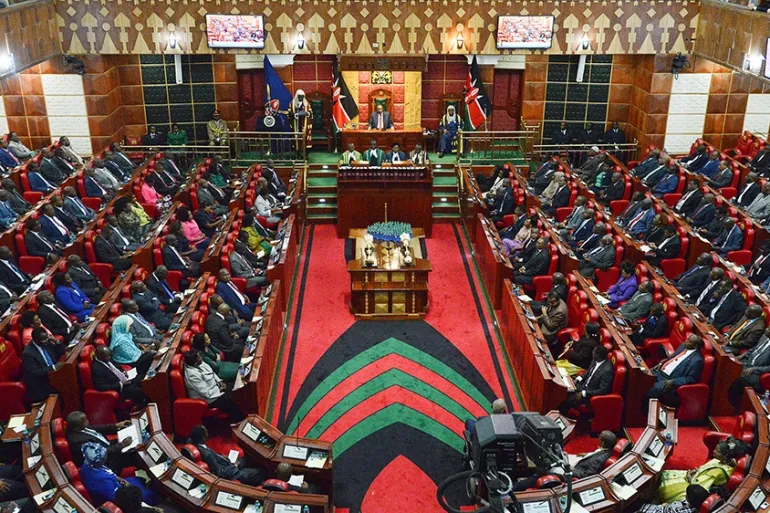Nairobi’s Crypto Bill and the End of the Wild West
Kenya’s new crypto bill could turn Nairobi into Africa’s regulatory capital—or expose the limits of state control over digital finance. As the CBK and CMA tighten oversight, the continent’s battle between innovation and enforcement begins.

Kenya’s Parliament has approved the Virtual Asset Service Providers (VASP) Bill, 2025, a landmark framework that could redefine how digital assets are regulated across Africa. Awaiting presidential assent, it marks Kenya’s shift from tolerance of informal crypto activity to structured oversight under the Central Bank of Kenya (CBK) and the Capital Markets Authority (CMA). The bill embeds crypto within existing regulatory architecture, aligning with Financial Action Task Force (FATF) and IMF standards without creating a new agency. The ambition is to integrate innovation into formal finance—but whether Kenyan regulators can enforce discipline in a decentralised industry remains the real test.
The law requires crypto exchanges, wallet providers, and custodians to obtain licenses, maintain offices in Kenya, appoint Kenyan-resident directors, and segregate client assets. They must hold local bank accounts, comply with anti–money-laundering (AML) and counterterrorist-financing (CFT) rules, and face penalties of up to KSh 25 million (USD 190,000) or five years in prison for violations. A 12-month grace period offers time to comply, but unlicensed peer-to-peer traders will likely disappear or merge into larger firms.
Kenya ranks among Africa’s top crypto adopters, driven by mobile-money integration and remittances. Yet until now, the CBK lacked the legal tools to supervise an industry it deemed outside the banking system. The new framework closes that gap, transforming an informal market into one accountable to regulators. Still, lawmaking alone cannot secure legitimacy. The CBK and CMA must demonstrate technical and institutional capacity to enforce prudential standards in a cross-border market that evolves faster than bureaucracies.
Financially, the segregation of client assets and mandatory local banking relationships will formalise fiat on- and off-ramps, improving transparency and potentially attracting institutional capital. For banks, crypto custody and settlement services could open new revenue streams. But integration remains hypothetical—no Kenyan bank has announced plans for crypto-linked products, and the CBK has yet to issue guidance on custodial services. For now, optimism outpaces operational readiness.
For smaller operators, the cost of compliance will be severe. Governance requirements, audits, and residency rules raise fixed costs that many peer-to-peer desks cannot absorb. The market will consolidate around a few well-capitalised exchanges, mirroring South Africa’s experience after the Financial Sector Conduct Authority (FSCA) began licensing crypto-asset service providers in 2023. Kenya may follow that pattern: initial contraction, followed by institutionalisation and slower retail churn.
Regionally, the implications are wide. The law positions Kenya as East Africa’s regulatory anchor, giving investors a jurisdiction with legal clarity at a time when Nigeria and Ghana oscillate between permissiveness and restriction. A Kenyan licence could become a de-facto “compliance passport,” signalling lower risk to global partners. Yet this advantage will pressure neighbouring countries to act or risk losing liquidity and talent to Nairobi.
Fiscal and monetary impacts will follow. Licensed exchanges become visible to tax authorities, broadening the corporate and VAT base. For the CBK, crypto-fiat reporting enhances surveillance of external flows—critical after the shilling’s 2024–2025 depreciation. But heavy-handed taxation or burdensome reporting could drive traders offshore, reviving the very informality the law seeks to eliminate.
Politically, the bill’s evolution shows awareness of governance risk. Lawmakers removed early provisions criticised for industry capture, signalling intent to maintain regulatory independence. Still, enforcement capacity remains thin. The CBK and CMA already face staffing and budget constraints; adding crypto oversight could overstretch both. Without funding and technical training, compliance may devolve into formality rather than substance.
Kenya’s approach is not unprecedented—its structure borrows from South Africa’s FAIS amendment and the EU’s Markets in Crypto-Assets (MiCA) model—but it is pioneering in context. It represents the first serious East African attempt to regulate digital assets without stifling innovation. If implemented effectively, it could become Africa’s reference model; if not, it risks joining the continent’s catalogue of ambitious but toothless reforms.
For Africa, the message is broader. The continent’s crypto phase has moved from access to accountability. Investors now assess jurisdictions by legal certainty, not hype. Kenya has offered a framework that aligns capital, compliance, and innovation; the rest of Africa must decide whether to emulate or compete. The verdict will come not from the bill’s text but from the first licences issued, the first audits conducted, and the first enforcement actions tested in court. Kenya’s law may well mark the transition from speculative enthusiasm to institutional trust—a turning point that defines the next decade of African digital finance.





